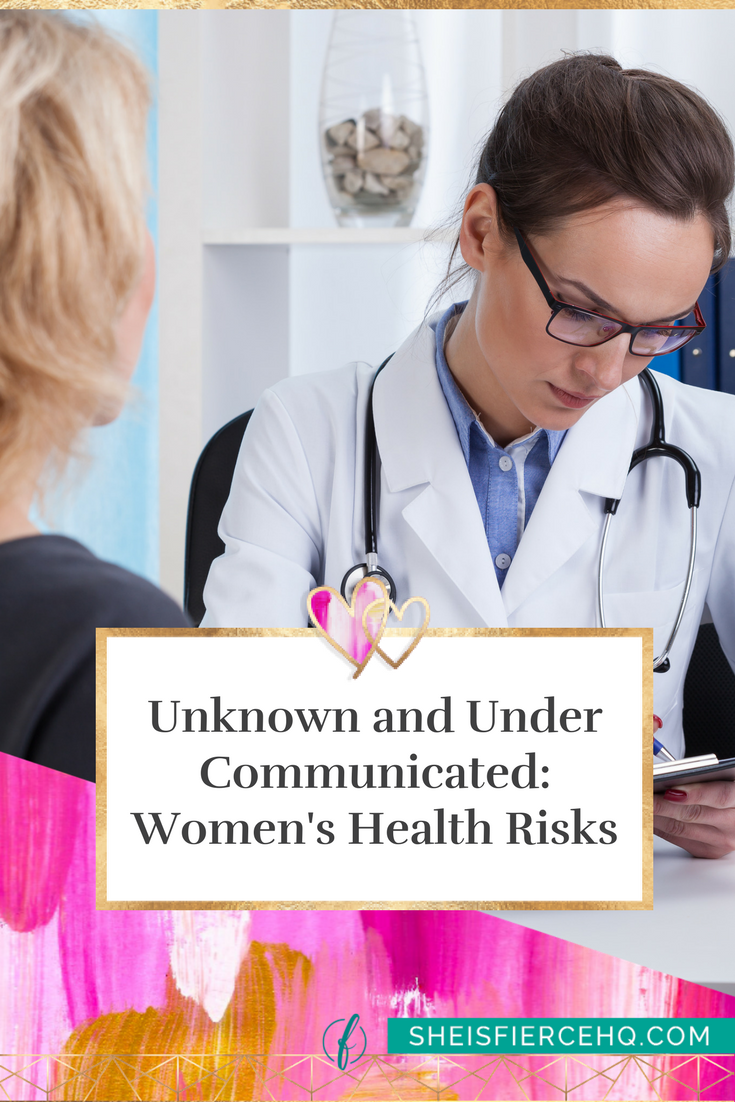Women live longer than men, but there are still great strides to be made in women’s health that could vastly extend our lifespans and increase our happiness. Under-diagnosed, under-communicated risks could take a chunk of your time here on Earth. Don’t let unrealized risks prevent you from living a longer, happier life.
Women Are Stressed
Stress harms men and women alike, but working women are more likely to have it than their male counterparts. Being twice as likely to have stress has a big impact on the long-term health of working women, increasing their likelihood of strokes, diabetes, heart attacks, and obesity. One source of increased stress in working women is the overall unequal division of work and the amount of unpaid chores and childcare that women pick up at home. It’s also harder for women to succeed in the workplace, and that lack of recognition and success also adds to working women’s stress.
There are a few things you can do about it. Demand more from your partner, continue supporting the great cause for equality between the genders, and try to relax. There are a few things you can do everyday to help yourself relax, like go for walks, having your partner pick up more chores around the home, or try some calming techniques like avoiding caffeine, exercising, or picking up an old hobby.
Women Are Poor
Poverty affects everyone, but women are more likely to be poor when compared to men, and poverty is bad for your health. Poverty in the western world has some surprising side effects. Other than being unable to afford healthy food, and the obesity related issues that are associated with it, poverty also increases your risk of smoking, being poor is stressful, and it even means climate change hits you harder, having a bigger impact on your life. Not only do poor people live in areas with bad air quality, but they are hit the hardest by it because of a stress-weakened immune system and other poverty related health factors (malnutrition hits the obese too). Poverty hurts everyone, but because there is a serious compensation gap between men and women, and it hurts women more.
I can’t tell women to just stop being poor. That is ridiculous. But I can recommend supporting and expanding policies and procedures that help everyone’s health and reduce the effects of poverty. You can support community gardens, help end food deserts, or help the environment. You could kill multiple birds with one stone. For example, strap a solar panel to your roof (which helps the environment) and spend the grand you save on electricity every year to build a community garden. There are a variety of ways to help people in poverty, including yourself. Whether it’s eating and planting vegetation, or supporting legislation for the environment, there are a million ways to chose how you can fight the effects of poverty.
Underrecognized Conditions
Pain
Women won’t get treated for pain in the same way men do. It takes women significantly longer to get treated for pain. Getting treatment for pain is an important factor for long-term quality of life. It is also terrible to be in pain; it can cause stress, exacerbate your health issues, and can even cause depression.
Deadly as a Heart Attack
As you might expect, women have heart attacks. Heart disease is one of the biggest killers of men and women alike. Women don’t get tested or treated for their heart attacks as often though, because women usually exhibit atypical symptoms. That’s right, the symptoms that more than half the population exhibit are atypical.
Diseases Aren’t Recognized Early
There are an array of conditions that aren’t treated or recognized early in women. Living with a treatable condition that can be exacerbated from a lack of medical intervention is quite sad. There might be a cure that you aren’t receiving because of your gender. Things like mesothelioma require prompt treatment to extend your life, but because women were primarily exposed through secondary sources, they might be misdiagnosed early, and not receive the best treatment they could’ve. If you have been diagnosed with Mesothelioma, it may be in your best interest to find out all you can about this. If you look into something like MesoWatch, mesothelioma cases, you’ll find out that you may be entitled to some form of financial compensation. As this is no fault of your own, there are companies out there that will be willing to help patients like yourself get through a difficult time in your life. Money won’t make up for this diagnosis overall, but it will help you out in one way or another.
Other examples include ADHD and HIV. Because the symptoms show up differently or not at all until later stages, early diagnosis and treatment is hard to get.
There is something you can do to improve your chances of getting tested and accurately diagnosed early: Find a doctor who works for you. A female doctor is more likely to do follow-up tests and give you better treatment. Keep in mind that this is a general trend with doctors as population, your particular female doctor may not work for you. Find what works for you as an individual and the doctor that best suits your particular needs.
Undertested, Misconceived Female Issues
Underdiagnosed conditions are a huge roadblock for women’s health. Since women constitute half of the world’s population, better awareness of symptoms for common issues is obviously vital. Increased awareness would have a positive effect on the lifespan and quality of life of this half of the population. There are also a few gender-specific ailments that affect large portions of the female population that can be painful and hard to diagnose.
PCOS
Polycystic ovarian symptom (PCOS) affects 5-10 percent of American women, in 75 percent of patients with the symptom anovulation become infertile. It’s a double whammy of a condition, since one of the best known treatments is to lose weight, but it also causes you to gain weight (about 50 percent of sufferers are overweight). It plays havoc with your hormones, and can cause everything from hair loss, to facial hair gain, and terrible acne to top it off. It’s a very common condition that can go untreated and undiagnosed for a long time, which is terrible, since if left untreated, it can cause heart disease.
Endometriosis
Another super common female condition is endometriosis. This condition can be incredibly painful, since it is when the lining of uterus decides to line soft tissues outside of your uterus. That can even include certain heart muscles, your bowels, or just around your pelvis (hanging out on your fallopian tubes). It affects 11 percent of women, and can be hard to diagnose since the pain associated with it often coincides with the red tide. If you are having a rough time when the communists come to town, consider asking your doctor to check on it. Treatment could be as simple as medication for the pain or hormone therapy.
Autoimmune Disorders
Women are also far more likely to have autoimmune disorders. Because female immune systems are so amazingly powerful, they can be a little too aggressive. Things like rheumatoid arthritis (where your immune system fights your own body, especially the joints), lupus, or multiple sclerosis all affect women more, because our immune systems are so powerful that they assume the body is one of its enemies. Autoimmune disorders are often genetic, but can be varied. For example, your mother may have lupus, but you may be affected by Hashimoto’s thyroiditis. Early treatment can help you live a longer and happier life, especially since these conditions are degenerative. Slowing the disease in its early phase is key to keeping your fingers moving, your thyroid intact, and your body going.
Women are poor, stressed out, and under diagnosed for preventable illnesses. But we still live longer than men. Knowing how you can prevent a cycle of death and pain could help you live an longer and better life. What’s ailing you?






Be the first to comment